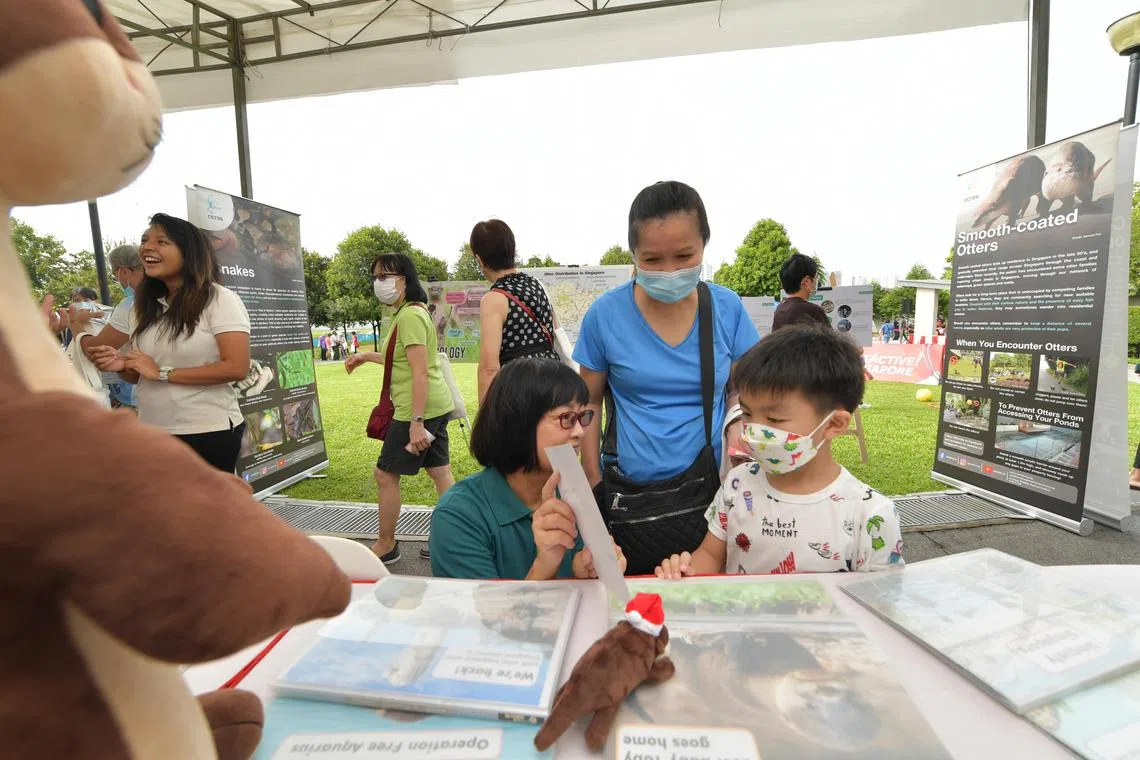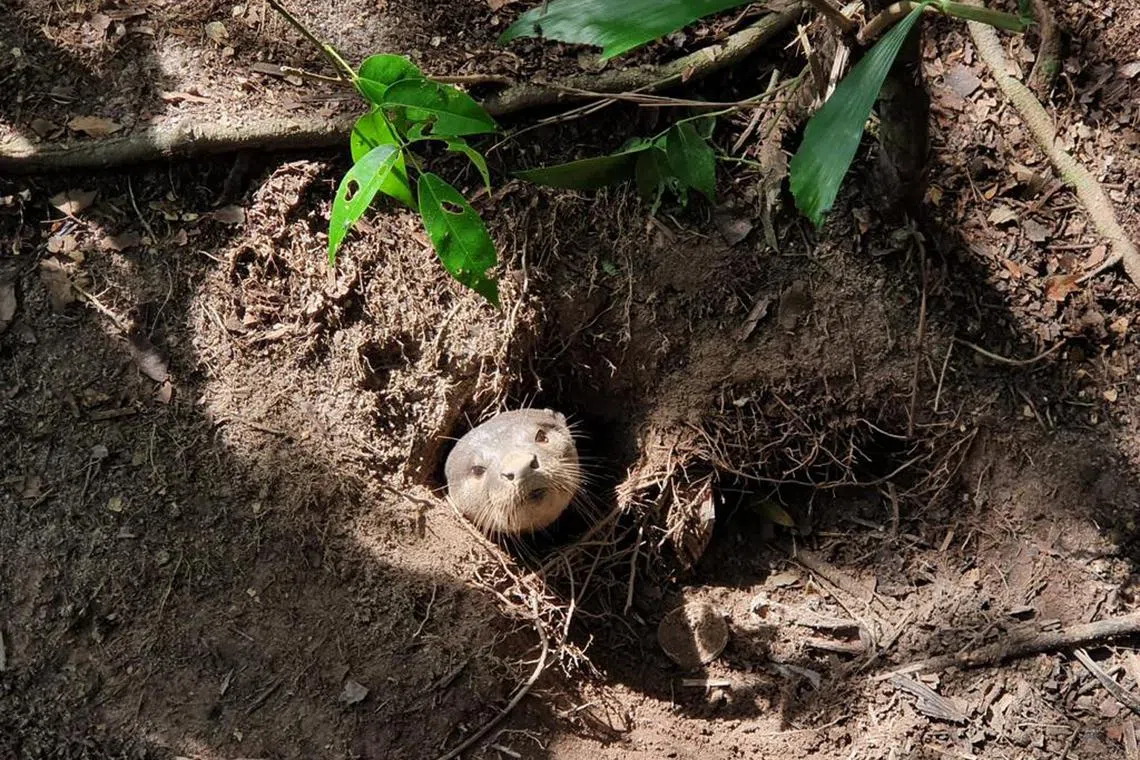Otter-proofing homes among tips for Cheng San-Seletar residents to co-exist with wildlife
Sign up now: Get ST's newsletters delivered to your inbox

Residents learning about otters at a farmers’ market held at Nim Meadow Park in Ang Mo Kio.
ST PHOTO: ALPHONSUS CHERN
Follow topic:
SINGAPORE - Private estate residents in Seletar were given tips on otter-proofing their homes as part of efforts to encourage co-existence with the animals.
This comes after a family of six otters that took residence in Seletar Hills Estate
The otters were eventually relocated away from the estate in October due to safety concerns for the animals and residents, as the otters had established a den underneath a heavily used pedestrian pathway. One of the otters was also pregnant, and that could have led to greater conflict with humans, experts had said.
At a farmers’ market held at Nim Meadow Park in Ang Mo Kio on Saturday, staff from the National Parks Board (NParks) and Animal Concerns Research and Education Society (Acres) gave tips on how to set up DIY fences made of wire mesh and plastic boards to stop otters from entering homes and fish ponds.
They were joined by volunteers from the Otter Working Group, which comprises members of the public and agencies that look out for the welfare of otters.
They also taught people how to interact with the animals safely, including reminders to keep a safe distance.
According to NParks, there are roughly 170 otters in Singapore currently, up from 79 in 2017.
Acres co-chief executive Kalai Vanan Balakrishnan, who was at Saturday’s event, said: “With all the incidents of otters invading homes, there is a lot of negativity around the species. So we wanted to clear that up.”
Earlier this year, residents in Seletar Hills Estate had complained about otters entering their homes, and eating koi and other fish they reared.
Mr Kalai said the recent conflicts were not due to the otter population exploding, but other factors, including how the homes were near waterways used by the otters and are seen as easily accessible food sources.
In Seletar Hills Estate, the six otters – three adults and three pups – had sought refuge there as they were facing competition from more dominant otter families in Sungei Punggol.
Grassroots organisations and other groups had earlier engaged residents about the otters, and surveys found that fences in the estate were often too low and had gaps large enough for otters to squeeze through.
Acres conducted trials at two houses to show residents how to better protect their homes. There are plans to conduct another trial at a third home soon.
Mr Kalai said: “A lot of people think that when incidents happen, we need to trap the animal. But it doesn’t solve the problem because eventually another group of otters will come in.”
He added: “Where possible, we are encouraging residents to make it their responsibility to protect their households. It is possible to DIY some of these things, and that is why we are here telling people how to do it.”

One of six otters relocated from a Seletar housing estate in its new holt.
PHOTO: OTTER WORKING GROUP
Otter Working Group volunteer Timothy Leong, 24, recounted how one resident who was upset after the otters had entered her home and ate her fish took up recommendations on how to put up proper barriers.
The animals did not come back after that, and the resident was glad she got the help she needed, he said.
The final-year life sciences student added: “My professor has a very good quote – conservation without the community doesn’t work. So we want to engage the residents and bring them on board with the idea of co-existence with otters and doing it together as a community.”
While otters have not been a problem for Ms April Cheong, 50, who lives in Luxus Hills in Seletar, as her home is not close to where the animals usually roam, the educator still found the information provided by NParks and Acres useful.
She said: “It is interesting to find out more, in case I move somewhere where I need it.”
Saturday’s farmers’ market was organised by grassroots organisations in Cheng San-Seletar ward to promote environmental sustainability. Prime Minister Lee Hsien Loong attended the event.
Ang Mo Kio GRC MP Nadia Ahmad Samdin said proceeds will go towards the rebuilding of Cheng San Community Club, which is slated to begin in 2023.
She said Singapore’s vision of having every household within a 10-minute walk to a park means reimagining how people coexist with nature in a way that balances various needs.
“As we navigate the way forward, I am grateful for the understanding of residents, and the partnership of diverse organisations such as NParks, Acres, the Otter Working Group and citizen volunteers who were at our farmers’ market on Saturday,” she added.


